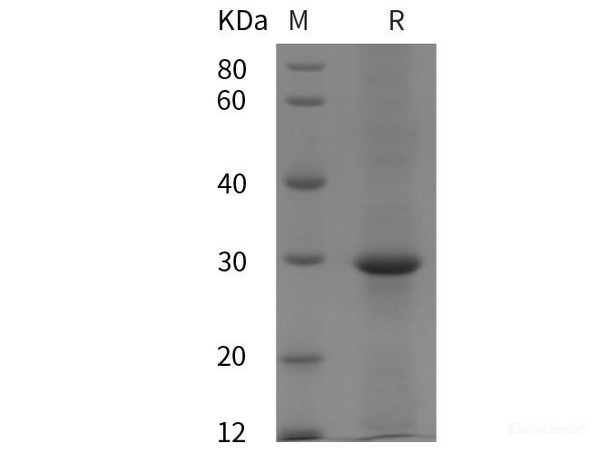Description
| Product Name: | Human Pancreatic lipase/PL Recombinant Protein (His tag) |
| Product Code: | RPES5428 |
| Size: | 20µg |
| Species: | Human |
| Expression Host: | E.coli |
| Synonyms: | Pancreatic triacylglycerol lipase, PL, PTL, Pancreatic lipase, PNLIP |
| Mol Mass: | 24.2 kDa |
| AP Mol Mass: | 30 kDa |
| Tag: | N-His |
| Purity: | > 95 % as determined by reducing SDS-PAGE. |
| Endotoxin Level: | Please contact us for more information. |
| Bio Activity: | Testing in progress |
| Sequence: | Pro 245-Cys 465 |
| Accession: | P16233 |
| Storage: | Generally, lyophilized proteins are stable for up to 12 months when stored at -20 to -80°C. Reconstituted protein solution can be stored at 4-8°C for 2-7 days. Aliquots of reconstituted samples are stable at < -20°C for 3 months. |
| Shipping: | This product is provided as lyophilized powder which is shipped with ice packs. |
| Formulation: | Lyophilized from sterile PBS, pH 7.4. Normally 5 % - 8 % trehalose, mannitol and 0.01% Tween80 are added as protectants before lyophilization. Please refer to the specific buffer information in the printed manual. |
| Reconstitution: | Please refer to the printed manual for detailed information. |
| Background: | PNLIP is an enzyme which belongs to the lipase family. Secreted from the pancreas, PNLIP is the primary lipase that hydrolyzes dietary fat molecules in the human digestive system, converting triglyceride substrates found in ingested oils to monoglycerides and free fatty acids. Bile salts secreted from the liver and stored in gallbladder are released into the duodenum where they coat and emulsify large fat droplets into smaller droplets, thus increasing the overall surface area of the fat, which allows the lipase to break apart the fat more effectively. The resulting monomers (2 free fatty acids and one 2-monoacylglycerol) are then moved by way of peristalsis along the small intestine to be absorbed into the lymphatic system by a specialized vessel called a lacteal. |






